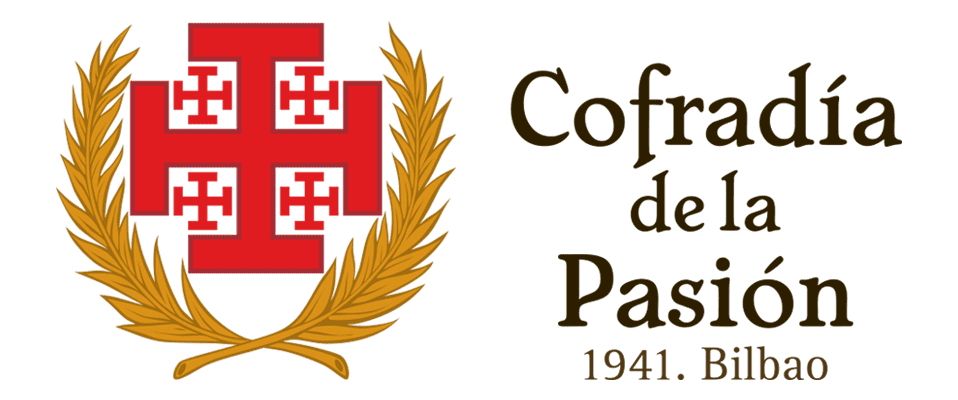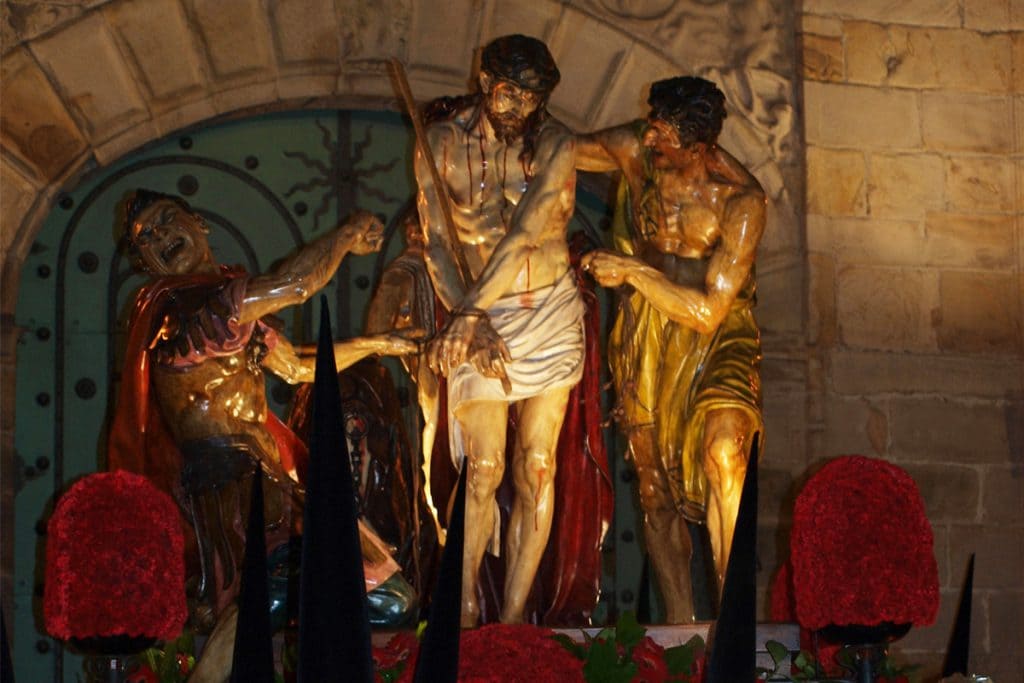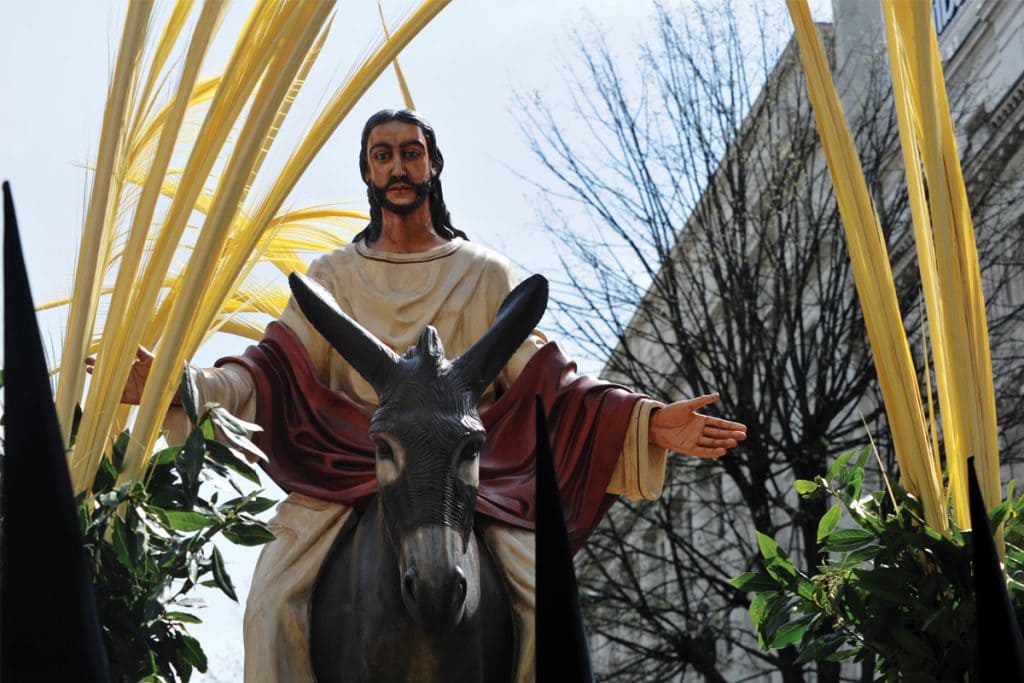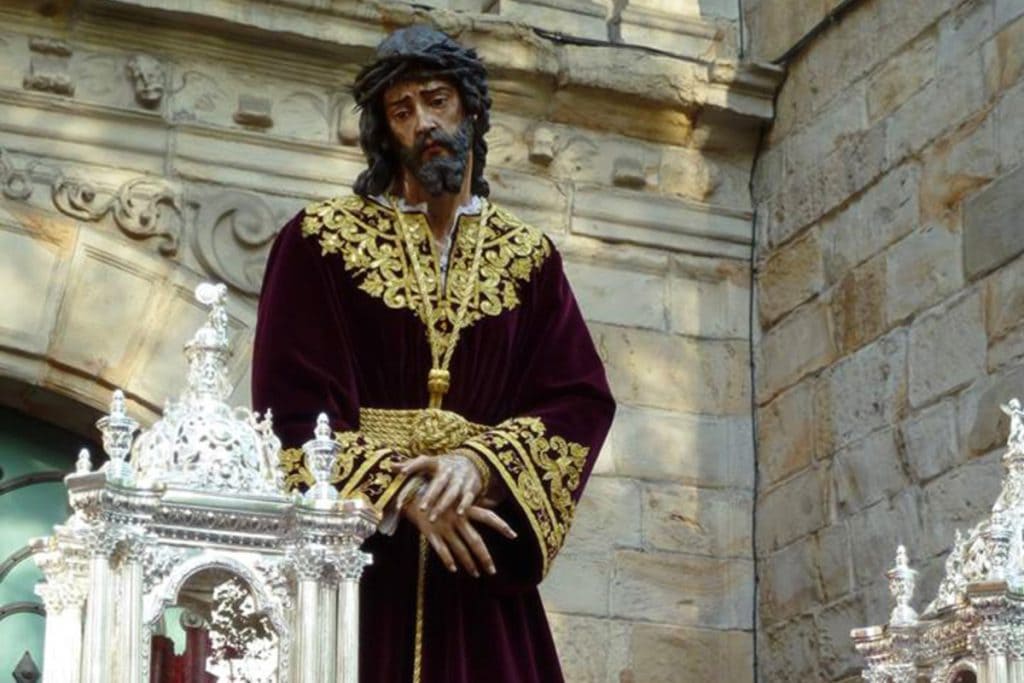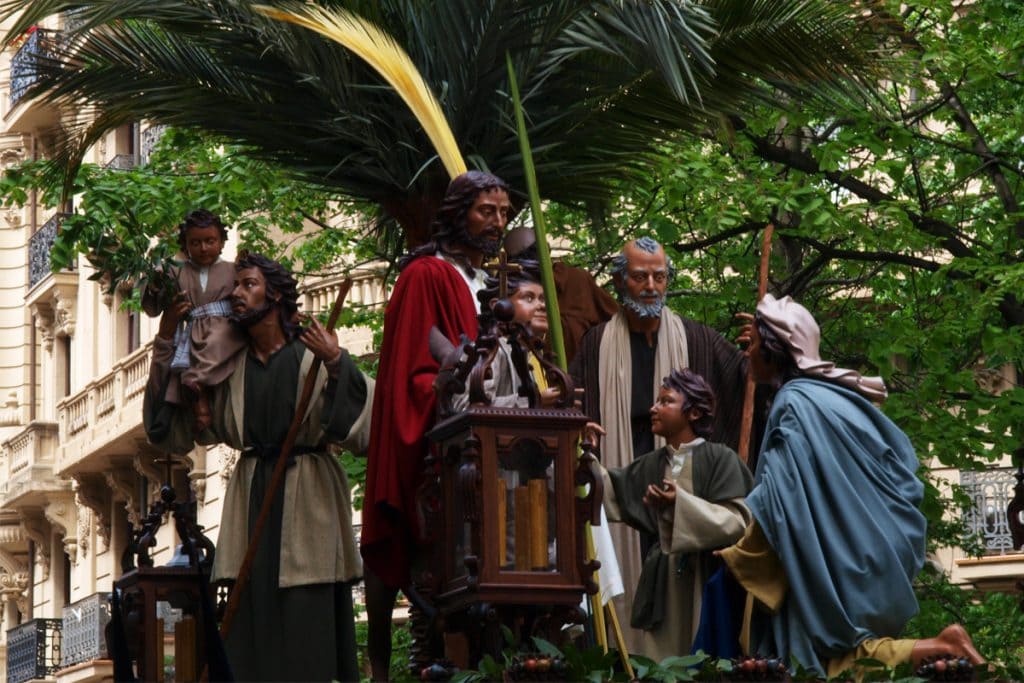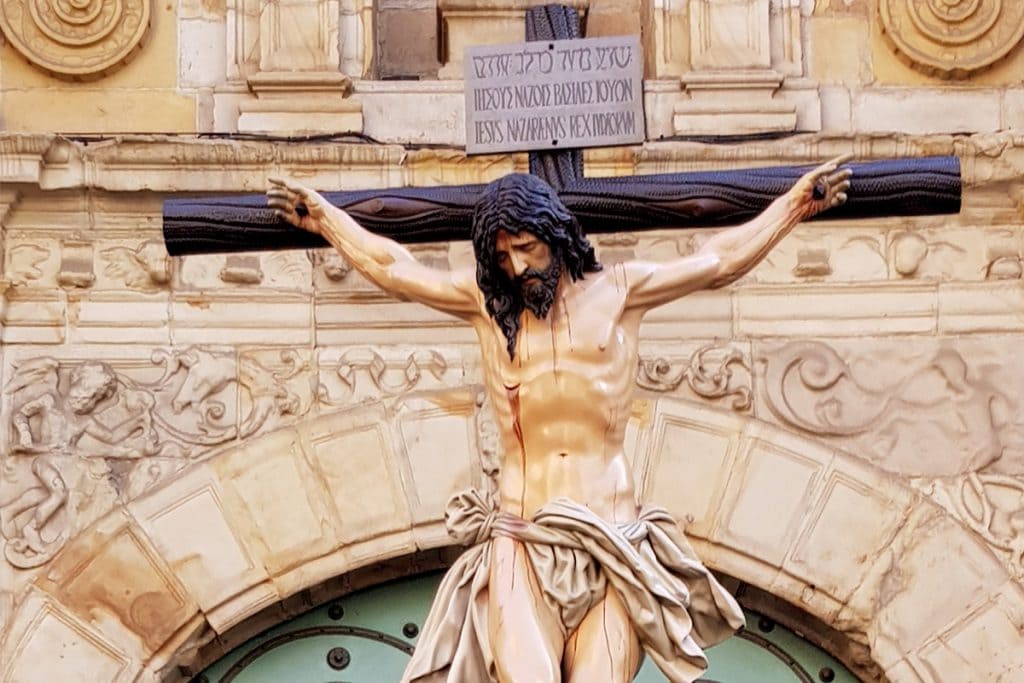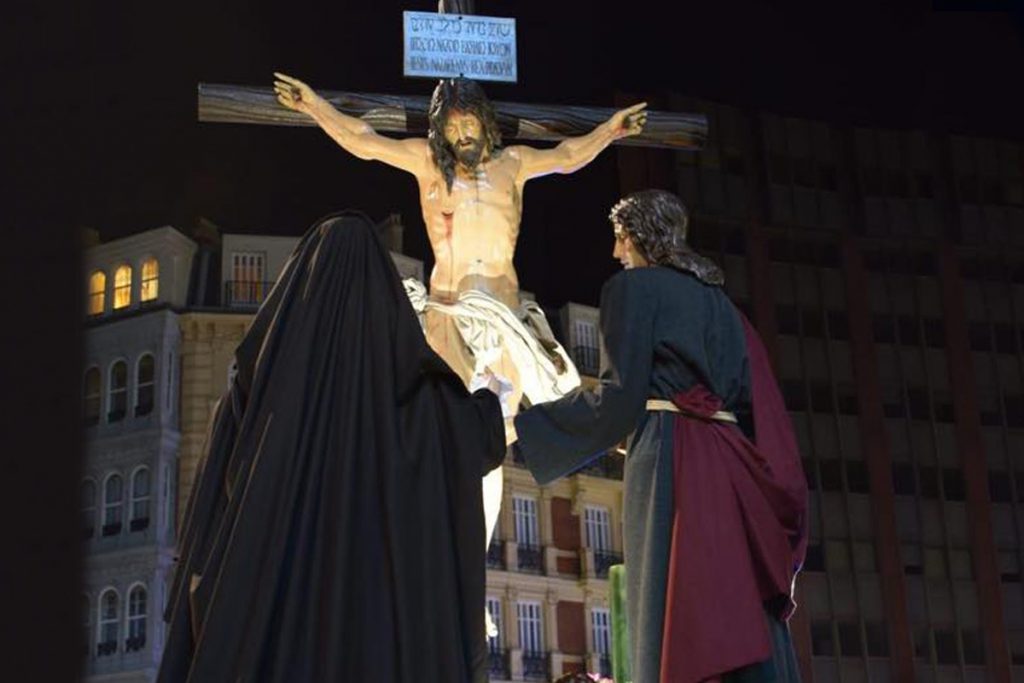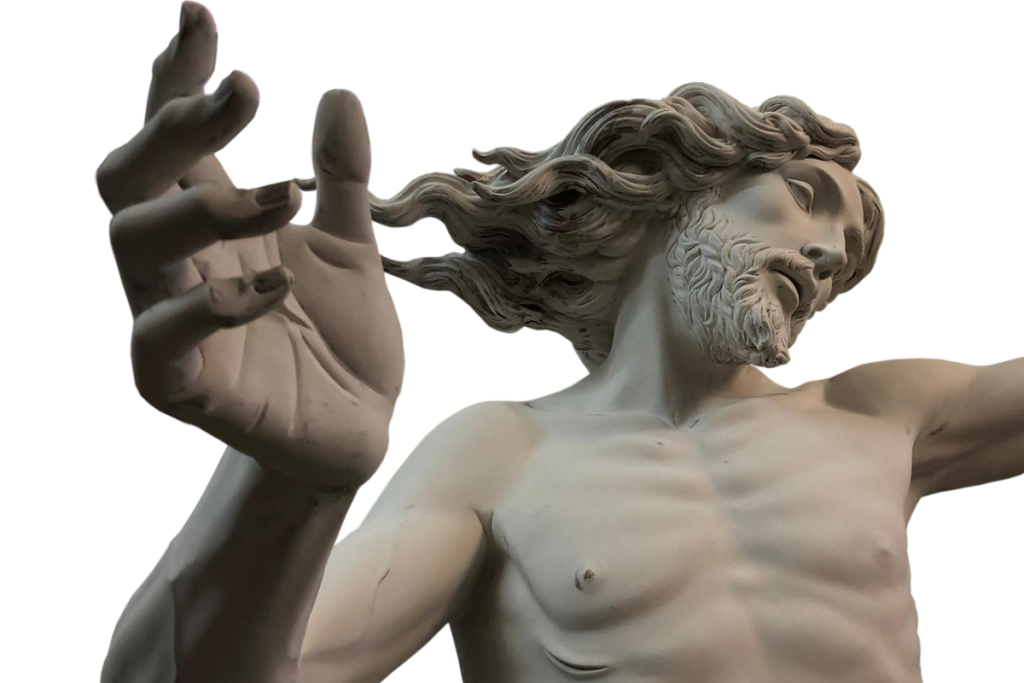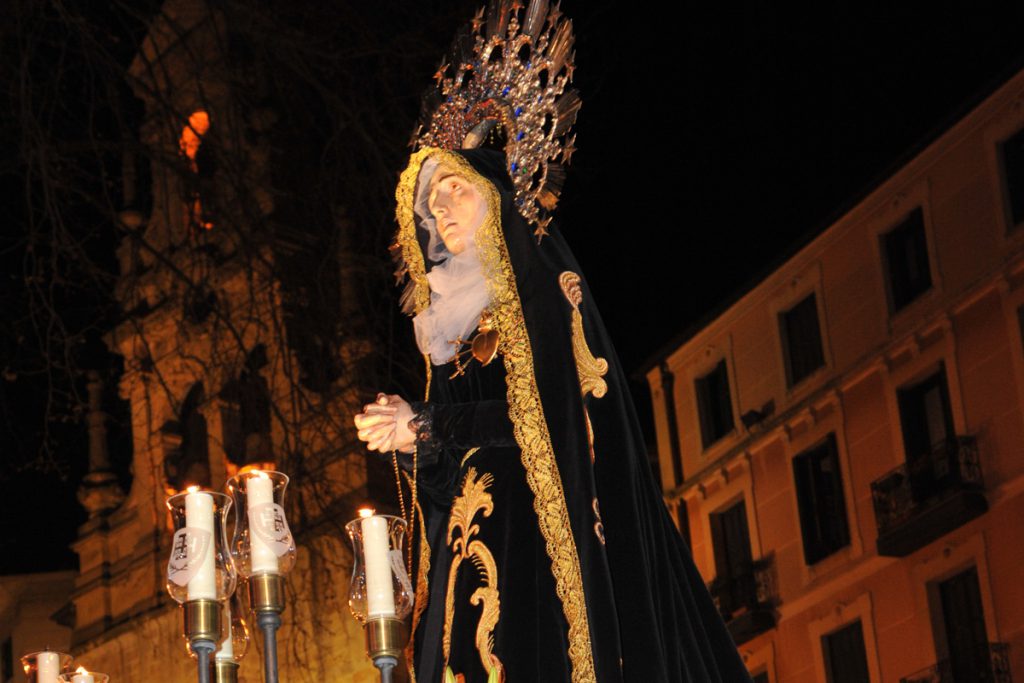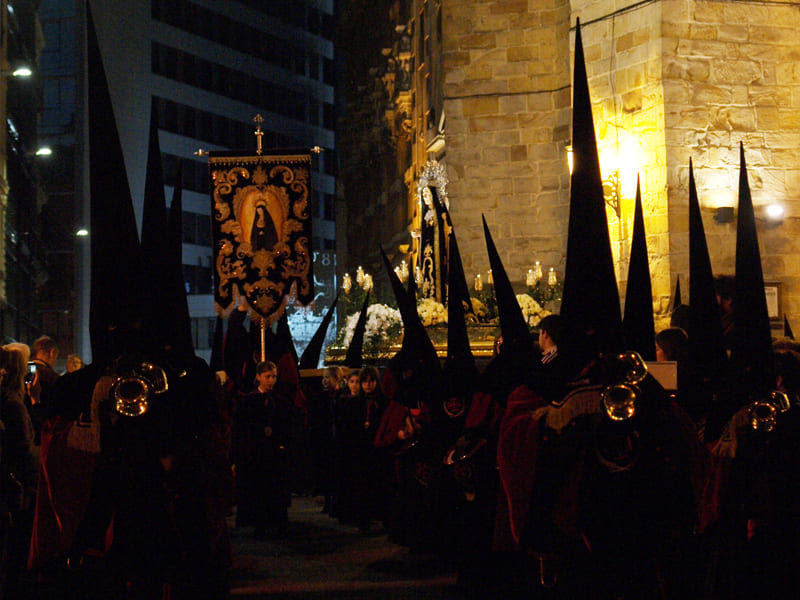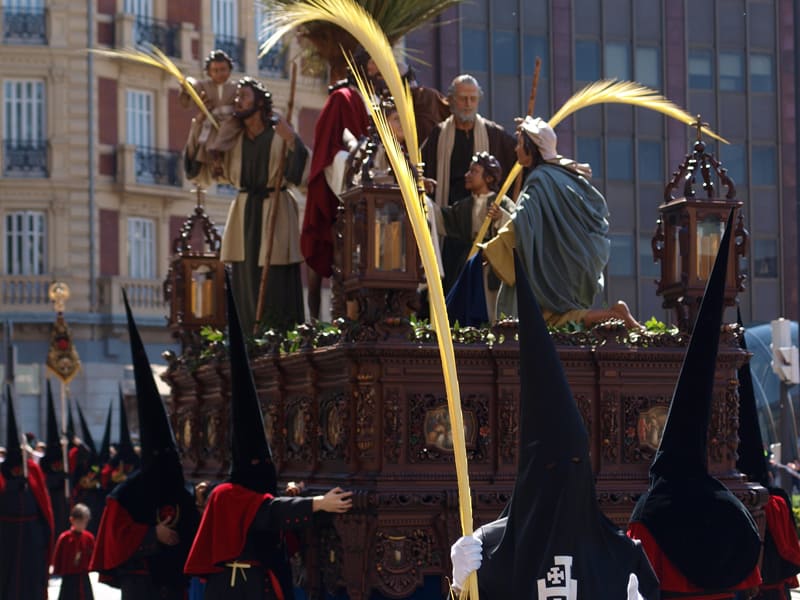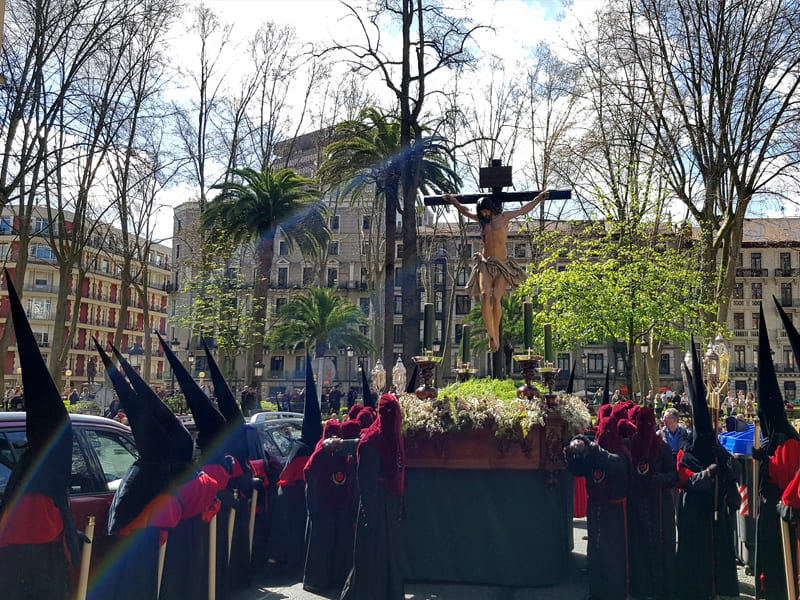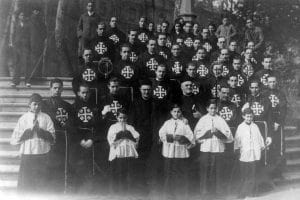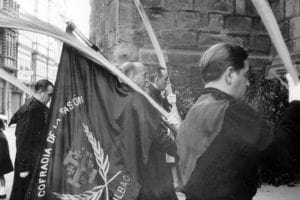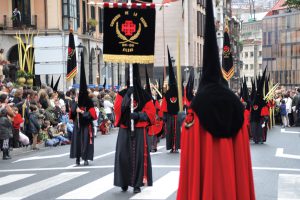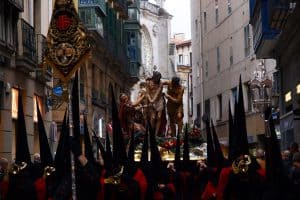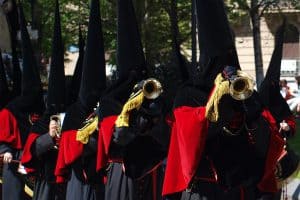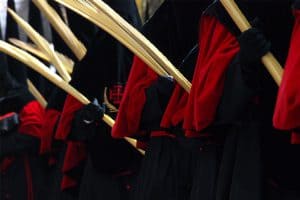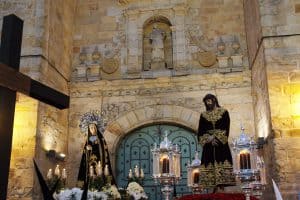The Brotherhood of the Passion
The Brotherhood of the Passion appears in Holy Week of 1941, when its first Regulations were approved in January of that year. During all this time it has always had like seat the church of Saint Vincent Martyr of Abando. In 1960, it merged with the Brotherhood of the Palms, also housed in the same church. It is the second oldest Brotherhood, the first to sign a Charter of Brotherhood with the oldest. It organizes three processions, the “Virgin of Sorrows” at the evening of Passion Friday, the “Little Donkey” (Christ entering Jerusalem) on the morning of Palm Sunday and the Health Procession on the morning of Holy Thursday.
It owns four “mystery” thrones (depicting a scene from the scriptures, with more than one character), Ecce Homo (1944), “Little Donkey” (1961) Hosanna (2015) and Golgotha (2019), and five other thrones, Father Jesus of the Passion (2001), Our Lady of the Branches and the Rosary (2006), Holy Christ of Health (2018), Resurrected Christ (2020) and Our Lady of Sorrows (20th century). At present, the brothers wear a black robe with red buttons, a black velvet cowl and reversible cape in black-red velvet, black gloves, shoes and socks and a red cord belt. Board members can wear red velvet cloak. Its emblem is the red Cross of Jerusalem flanked by two golden palms.
